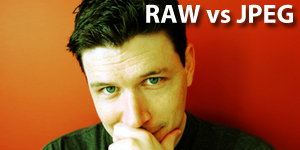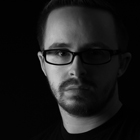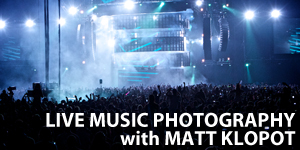The dawn of the modern digital camera has made the lives of photographers much easier in many regards. No longer does a photographer have to worry about running out of film, or budgeting exposures for a day of shooting. There’s no time waiting for rolls of film to be developed, and we can instantly review all of the photos that we’ve taking throughout the course of the day simply by tapping a few buttons. Even the editing process is much easier. With editing software such as Adobe Photoshop Lightroom and Apple’s Aperture, cataloging and making adjustments to our photos is as easy as ever before.
So, what is one of the burning questions that many beginner photographers – and sometimes advanced photographers too – get caught up in before even snapping a single picture?
Should I shoot in JPEG or RAW?
Depending who you ask, there’s a good chance that the answer will be strongly polarized on either side of the fence. For many, RAW is the only way to shoot. With access to the literal raw data that comprises the photograph, it makes editing so much easier. For others, JPEG is the de facto standard. If you can’t get it right in the camera, why bother at all, right? While there is no magical answer to this question – because truly, each image format has its advantages and disadvantages – there are some things to consider before you change your camera’s settings.
What is RAW?
I have a rather unique way of describing what RAW is, so bare with me on this one. Do you remember that scene from the movie Ghost, where Patrick Swayze and Demi Moore are working together to shape a clay pot? The clay is still soft and pliable, making it easy for them to use the potter’s wheel to manipulate the material into its desired form. Well, imagine that RAW files are kind of like that, but without the cheesy overplayed soundtrack. When you capture a photo in RAW, you’re working with a malleable chunk of clay that contains all of the information necessary to produce a final image. Because that clay/image is still soft and malleable, you can change things about it without any destructive effects. Once you’re happy with the things you’ve changed – like white balance, exposure, and black levels, for example – you can save and export the picture as a final output file, just as you would fire a clay pot in the oven to harden it and make it usable.
So, how does this differ from a JPEG file? Well, imagine that instead of being handed a chunk of mouldable clay, you’ve been handed a hardened clay pot. Try changing its shape, or the consistency of its material… It’s not so easy anymore. The most you can do is apply layers of paint or add more pieces to it, like handles. A JPEG file is much like this clay pot. All of the information that comprises the image is baked in and unmovable, and any changes you make are considered “destructive” because they can potentially change the file itself (unless you make a copy first).
Then Why Shoot JPEG?
When it comes to the choice between shooting JPEG or RAW, I typically lean towards the RAW camp. As a portrait and wedding photographer Indianapolis, I want to work with the highest quality, most information-rich files that I can. Also, given the nature of my work, I have time after the shoot to process, edit, export, and deliver the final product.
In some situations though, time is of the essence, and it is necessary to have images delivered immediately, with no opportunity to process larger RAW files. In cases like this, being able to deliver JPEG files right away significantly reduces that wait time. The only downside to shooting this way, as you now know, is that there’s a lessened ability to edit the photos to achieve better quality results.
There is, however, an in-between. Most (if not all) cameras that are capable of shooting RAW also have the ability to shoot RAW + JPEG. When shooting with this option selected, every photo you take will be recorded twice to the memory card – one file in RAW, and one file in JPEG. Some cameras with dual card slots can even record each format to its own card, further reducing the amount of time you have to spend sorting through the photos. Shooting this way, you would now have the flexibility to provide instant JPEG previews or delivery files, but you also retain full quality RAW files to edit to your heart’s content.
So, whether you choose to shoot in RAW or JPEG, just make sure that you know the implications of both. One is resource intensive and requires more storage space, while the other allows for much quicker workflows, but at the cost of quality and customization. My suggestion – if you’re not sure which is best for you, shoot in RAW + JPEG at the start, and once you’ve had experience working with both types of files, switch to the one that works best for you.
Happy shooting!



